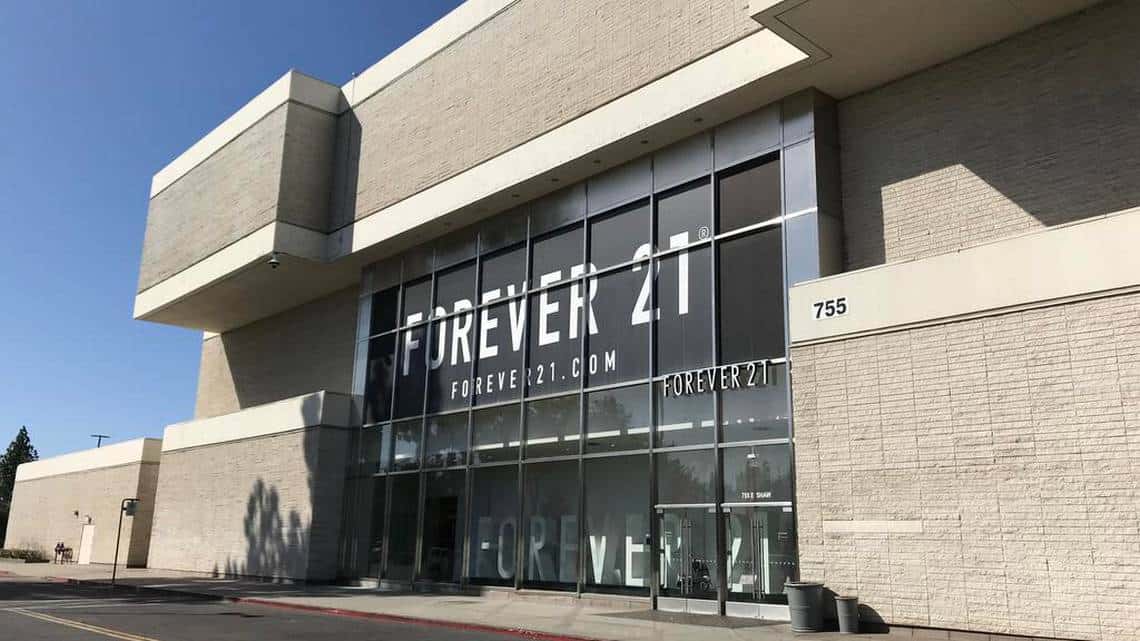
Forever 21, the seller of plaid flannel crop tops and other trendy fashions, has filed for bankruptcy.
The company says it isn’t going belly up. But it plans to close up to 178 stores in the United States and 350 total worldwide.
Just what this means for Valley stores is still up in the air. Forever 21 has stores in Fresno’s Fashion Fair mall, the Visalia Mall at the Tulare Outlets.
The Fresno store is unusually huge – or at least it was, back when it opened in 2011.
It took over 150,000 square feet and three stories of the former Gottschalks store on the east end of the mall.
At the time, Forever 21’s CEO called the Fresno store a “flagship.” It was the third largest in the chain, part of an experiment where the company wanted to essentially become a department store, selling basics and cutting-edge fashion.
But a lot has changed since then and the Fresno store is now about half its size.
CLOSURES
The retail giant hasn’t said which stores it plans to close in the U.S. yet.
A Fashion Fair representative declined to comment on the future of the local store.
A letter to customers on Forever 21’s website said the stores are operating as normal for now. They are still taking gift cards and return and exchange policies are the same.
“The decisions as to which domestic stores will be closing are ongoing, pending the outcome of continued conversations with landlords,” the letter said. “We do however expect a significant number of these stores will remain open and operate as usual, and we do not expect to exit any major markets in the U.S.”
If Forever 21 considers Fresno a major market, that could be a positive sign for the Fresno store.
The retailer already closed its Hanford Mall location in 2016. That was an 80,000 square-foot location in a former Gottschalks.
Forever 21 had a smaller store in Fashion Fair for a while before it took over the former Gottschalks.
It poured money into the store, including removing the escalators and rebuilding them toward the back of the store. When it opened, it had 500 employees and three floors full of merchandise, including men’s, women’s plus sizes and basics like leggings and tank tops.
By 2016, it had closed off the third floor and trimmed its hours.
Today, the second floor is dedicated to sale items costing $5 or less, including $5 dresses and $1 neckties.
And even that sales space has shrunk, with a significant portion of the floor roped off and empty.
FOREVER 21 HISTORY
Forever 21 was founded in 1984 and, along with other so-called fast fashion chains like H&M and Zara, rode a wave of popularity among young customers that took off in the mid-1990s.
Its popularity grew during the Great Recession, when shoppers sought fashion bargains. In an aggressive expansion, it took over many closed Gottschalks and Mervyn’s stores.
Its $19.99 dresses and $3.99 leggings appeared to sell well.
But over the last year or so, fast fashion has fallen out of style. Young customers are losing interest in throw-away clothes and are more interested in buying eco-friendly products. They’re also gravitating toward rental and online second-hand sites like Thredup, where they see clothes worn again instead of ending up in a landfill.
These trends are happening while discounters like Target have spruced up their fashion assortments, stealing away customers.
Forever 21 has also been more vulnerable than some other chains because of its large footprints in major malls, which are attracting fewer shoppers.
The retailer filed for Chapter 11 bankruptcy, meaning it plans to reorganize and emerge from bankruptcy a leaner, more profitable business.
It has secured $275 million in financing from existing lenders with JPMorgan Chase Bank, and $75 million in new capital from TPG Sixth Street Partners, that will allow it to make needed changes.
The Associated Press contributed to this report.

